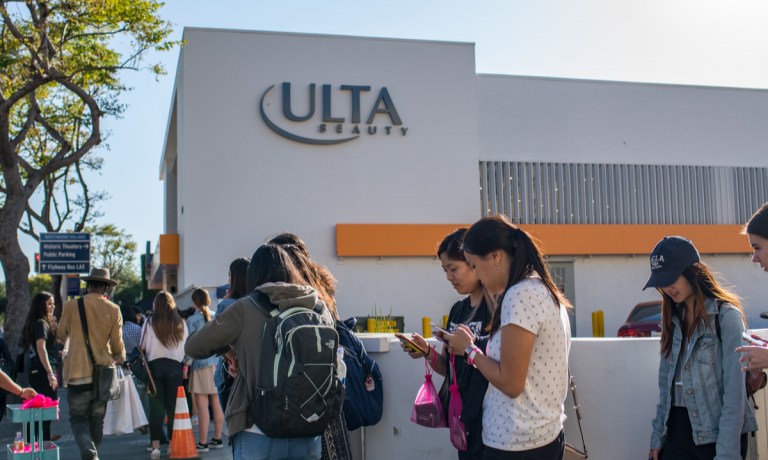Are Loyalty Programs a Profit Center or Cost Center?

Brands, retailers, and solution providers are increasingly focusing on loyalty programs to not only encourage repeat purchases but also gather valuable, first-party data. However, it remains crucial to determine whether these opportunities effectively resonate with customers. Also, it is important to assess whether loyalty programs improve financial performance. Are loyalty programs a cost center or a profit center?
A recent example of a loyalty bid is Shopify’s introduction of a rewards program for Shop Pay users in the U.S. Customers who make eligible purchases through Shop Pay can now receive 1% back in rewards, which can be redeemed on the company’s Shop app.
However, companies are going beyond simple cash-back incentives. They are offering personalized shopping experiences, such as Saks’ styling service at resorts.
But the question lingering around the effectiveness of these endeavors.
Ulta Beauty
Ulta Beauty boasts the highly successful Ultamate Rewards loyalty program, which has amassed a membership of over 40 million and continues to grow. The interactions between customers and the brand, both in-store and online, reveal a vivid picture of deeply engaged loyalty members who exhibit remarkable brand affinity.
During an interview with PYMNTS for the “Summer Loyalty Series” sponsored by Banyan, Nicole Bernhardt,, the head of Ultamate Rewards, highlighted the role of data in tailoring offers and rewards, which has positioned Ultamate as a case study for successful loyalty programs.
Bernhardt said the Ultamate program goes beyond simply tracking consumer trends. It enables meaningful consumer engagement, ensuring value offerings that are relevant to individual customers. The program personalizes the customer experience, including product discovery, checkout process, and promotional activities.
Bernhardt noted that 95% of Ulta Beauty’s sales are directly associated with its loyalty program, a testament to the power of data-driven strategies.
Read more: PYMNTS Summer Loyalty Series: 95% of Ulta Beauty Sales Driven by Loyalty Members
PetSmart Gets Personal
Then there’s PetSmart’s Treats Rewards loyalty program that since its launch in 2018 has reportedly grown as the specialty retailer has consistently achieved double-digit, and sometimes triple-digit, increases in membership each year. In the first six months, 19 million members enrolled in the program.
However, 2022 proved to be the pet store’s year for PetSmart’s Treats Rewards program. Compared to 2021, the member activation rate rose nearly 150%, setting a record for the program.
Loyalty Across the Pond
On the other side of the Atlantic, loyalty programs have captured the hearts of Brits if executed effectively.
PYMNTS research reveals that rewards and loyalty programs rank high among the decisive factors influencing where consumers choose to shop. This trend extends to the credit card industry as well, according to Tim Chong, the co-founder and CEO of U.K. credit card startup Yonder. British customers seek to maximize the value of their everyday spending by earning points, miles, or cash back on their purchases.
Chong told PYMNTS that maximizing credit card rewards or determining the optimal utilization of accumulated points can present a challenge. This challenge often leads users to unknowingly forego significant value over time.
“Quite frankly, the average person doesn’t want to sit down with a spreadsheet trying to calculate the most optimum way to use their American Airlines or British Airways Avios points, which is valuable but very difficult to use unless you know how to play the game,” Chong said in an interview.
Yonder, the credit card powered by Mastercard, aims to address this issue for its customers, primarily millennials and Gen Zs, who are wary of credit cards. According to Chong, Yonder goes beyond the transactional nature of rewards and strives to deliver experiential value to its users.
Yonder provides curated experiences tailored to the lifestyle of its users, encompassing dining, social activities, and travel opportunities. These experiences are made available through rewards partnerships throughout London. Chong said there are 12 to 15 fresh experiences each month, creating excitement among users who use the card to discover novel activities and become tourists in their own city.
Read more: How Experience-Driven Credit Card Rewards Can Win Gen Z, Millennial Loyalty
A Savior From Bankruptcy
Francesca’s, a boutique clothing chain with over 400 stores, faced financial distress three years ago, leading to Chapter 11 bankruptcy. However, in 2021, the company experienced a turnaround when it was acquired by two private equity firms. Francesca’s emerged from bankruptcy and resumed its operations.
In the aftermath, Francesca’s is rebuilding its business, focusing on various initiatives such as expanding its tween brand, Franki, and venturing into the apparel resale trend.
The retailer introduced The Fran Club, its loyalty program, in October. According to a report by Modern Retail, the program has amassed over 350,000 sign-ups.
Read more: Can Loyalty Programs Save Struggling Retailers From Bankruptcy?
PYMNTS reported in May that the boutique has acquired lifestyle brand Richer Poorer as part of its strategy to appeal to millennial and Gen Z women.
The Value Needed in Loyalty Programs
All in all, it is crucial to establish a correlation between the rewards payout and desired behaviors to prevent a rewards program from transforming into a cost center instead of a profit center.
Customers do not hold equal value. To optimize loyalty and profitability, a company should prioritize its top-tier customers by providing them with the most value. This approach creates a mutually beneficial cycle.
It is crucial to see the connection between the value delivered to customers and the value generated for the company. A rewards program should consider the associated costs rather than simply providing benefits.
Personalization, a compelling product and value add is critical. Beyond that, companies need to consider what their point is. Take it from Sephora, Dunkin’ and Best Buy who had generous rewards programs but have since made adjustments.